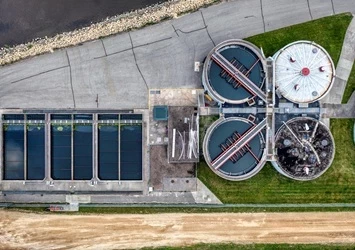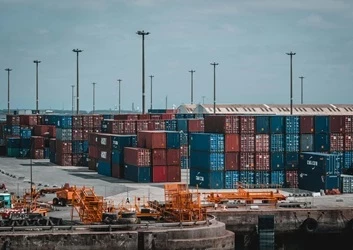From grape to glass: Operational excellence in every drop
How innovation, data and operational excellence (OPEX) are elevating winemaking to a whole new level
Add bookmark
When we think of Latin American wine, we often picture beautiful vineyards, family-owned traditions and a strong connection to the land. However, behind each bottle – especially those reaching shelves in over 130 countries – is a story not just of great terroirs, but of how innovation, data and operational excellence (OPEX) have elevated winemaking to a whole new level.
Personally, I love bringing bottles of wine from Chile to friends or business acquaintances abroad. It’s a way of showing appreciation by sharing something I genuinely enjoy – not just as a product, but as a reflection of how far the industry has come and the pride it instills.
As someone who enjoys cooking, pairing wine with a good meal during holidays or family celebrations has become part of those meaningful moments. Every time I open a bottle from the region, I appreciate the consistency and the experience. I know that’s not by chance – it’s the result of a carefully designed process.
Join the PEX Network community

Don't miss any news, updates or insider tips from PEX Network by getting them delivered to your inbox. Sign up to our newsletter and join our community of experts.
Learn MoreInnovation in the vineyards
Several leading wineries across Latin America are demonstrating that tradition and transformation can evolve side by side. At Concha y Toro, the region’s largest wine producer and the fifth-largest globally, vineyards are managed with precision agriculture, utilizing drone imagery and artificial intelligence (AI) based yield forecasting to reduce planning errors and optimize harvests. The company cultivates over 10,800 hectares and ships nearly 30 million cases annually, requiring tight coordination between field data and production.
Others like Montes and Santa Rita have adopted similar approaches to reduce water use, improve climate resilience and ensure quality across diverse growing conditions. Montes, for example, has cut water consumption by over 25 percent through targeted irrigation while maintaining premium quality standards in challenging terrain.
Join us at All Access: Operational Excellence 2025 to explore the latest developments in OPEX
Excellence beyond the vine
Harvesting great grapes is only the beginning. Behind the scenes, operational discipline turns raw potential into something repeatable and scalable.
From bottling automation to predictive maintenance and real-time logistics, wineries like Concha y Toro and VSPT Wine Group have built global supply capabilities that support efficiency at scale. VSPT, which exports to more than 80 markets, produces around 27 million bottles annually, with digital tracking across production, warehousing and distribution.
Santa Rita increased exports by 12 percent in 2023, reaching 3.5 million cases, while continuing to optimize cost-to-serve across key markets. These results reflect a strong foundation in business process management (BPM) principles – standardizing workflows, reducing variability and improving throughput without sacrificing quality.
Sustainability, data and purpose
Perhaps the most visible shift has been how sustainability has become central to operational strategy. Concha y Toro was the first winery globally to measure its water footprint (certified in 2010) and introduced an internal carbon price of $50/ton in 2022 to guide investment in environmental innovation.
VSPT produces up to 60 percent of its energy needs at its San Pedro plant using biogas from grape waste. Montes offsets 100 percent of its CO₂ emissions and has earned multiple awards for its native forest preservation initiatives, proving that environmental stewardship and brand strength can go hand in hand.
Even packaging is part of the strategy: lightweight bottles and optimized case sizes help reduce emissions and logistics costs – practical examples of aligning operations with purpose.
Competing on a global stage
These aren’t boutique operations with niche output – they are global players. Concha y Toro ranks consistently among the top five wine companies worldwide by volume and is a top three brand in markets like the UK, Brazil and parts of Asia. Its portfolio includes 40+ brands, each with distinct strategies, certifications and market positioning.
Trapiche, from Argentina, leads in premium Malbec exports and is present in over 80 countries. VSPT, home to brands like San Pedro and Tarapacá, is consistently ranked among Latin America’s most sustainable producers, with listings in the Dow Jones Sustainability Index Chile and MILA.
This is Latin America competing at the highest level – not only with great wine, but with great processes behind every bottle.
We often think of wine as something handcrafted and romantic – and it is. However, what makes a great wine experience consistent, scalable and globally competitive comes down to how the process is designed and executed.
From AI in the vineyard to carbon-neutral shipping, from predictive bottling to closed-loop energy systems – OPEX is behind every drop. These wineries show us that legacy industries can evolve by embracing data, sustainability and world-class process design.
For those of us who work in transformation, it’s inspiring to see Latin American producers not only preserve their heritage – but improve it.
All Access: OPEX Operational Excellence 2025

Operational excellence is a set of practices that helps organizations to improve their efficiency and effectiveness. In 2025, operational excellence will be more important than ever as organizations look to reduce costs and improve customer satisfaction.
All Access: OPEX Operational Excellence 2025 from PEX Network will help professionals get an understanding of the latest developments in operational excellence, including how to identify and improve key processes, how to implement operational excellence initiatives, and how to measure the success of operational excellence initiatives.
Register Now


















